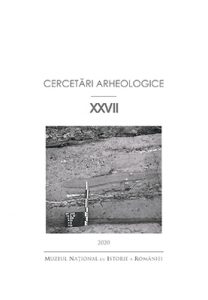Eneolithic bifacial implements from the Gumelnița layers of Hârșova and Bordușani tell settlements
Eneolithic bifacial implements from the Gumelnița layers of Hârșova and Bordușani tell settlements
Author(s): Loredana NițăSubject(s): History, Archaeology
Published by: MUZEUL NAȚIONAL DE ISTORIE A ROMÂNIEI
Keywords: Eneolithic; Gumelnița; axes; points; bifacial tools; flint;
Summary/Abstract: The Eneolithic stratigraphic sequences from Hârșova and Bordușani tell settlements provided abundant lithic collections of both knapped and ground stone implements, belonging to the Gumelnița A2 cultural tradition. Among those, there are two types of artefacts for which both the shaping and the recycling stages involve the use of carefully controlled bifacial knapping.The first type includes axes, made from homogenous, ochre/reddish brown coloured flint; before the abandonment phase, they went through several stages of trimming, serving as cores for producing long and relatively narrow blades, and recycling, through lateral and ventral flaking. The second type consists of triangular flint points of various sizes and morphology; their shaping involves the use of flat, extended retouch, applied to dorsal and ventral surfaces, as well as steep, continuous retouch for the lateral edges and/or the base.The present contribution aims at discussing the technological stages involved in producing bifacial flint axes and points, their use, such as it can be inferred from macroscopic use-wear observations, as well as their archaeological context and possible analogies with similar artefacts discovered in Gumelnița layers from other Eneolithic sequences.
Journal: Cercetări Arheologice
- Issue Year: XXVII/2020
- Issue No: 1
- Page Range: 243-258
- Page Count: 16
- Language: English

